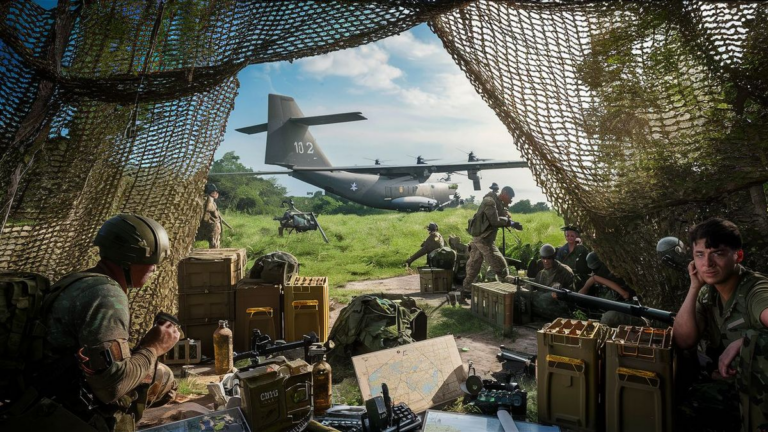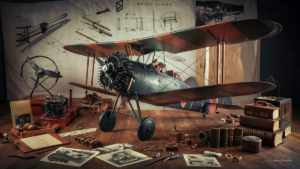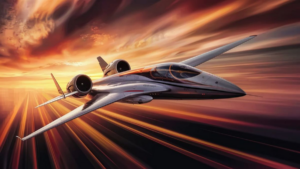The C-123 aircraft played a significant role during the Vietnam War, providing crucial support and transportation capabilities to military forces. These versatile aircraft were utilized for various missions, including troop and cargo transport, aerial spraying, and electronic warfare.
The Role of C-123 Aircraft
During the Vietnam War, C-123 aircraft were extensively used by the United States Air Force and other allied forces. They were primarily employed for tactical airlift missions, transporting troops, equipment, and supplies to different locations across the battlefield. These aircraft were particularly valued for their ability to operate from short and unimproved airstrips, allowing them to access remote and inaccessible areas.
One of the notable roles of the C-123 aircraft was in the aerial spraying operations, commonly known as Operation Ranch Hand. These missions involved the spraying of herbicides, including Agent Orange, to defoliate dense vegetation and deny cover to enemy forces. While controversial, these operations aimed to disrupt enemy supply lines and destroy their hiding spots in the dense jungle terrain.
Adaptability and Modifications
The C-123 aircraft demonstrated remarkable adaptability during the Vietnam War, undergoing various modifications to suit the evolving needs of military operations. Some aircraft were equipped with specialized equipment for electronic warfare, including jamming devices to disrupt enemy communications and radar systems.
Furthermore, C-123 aircraft were modified for use as gunships, fitted with additional weaponry such as miniguns and cannons to provide close air support to ground troops. These modified gunships played a vital role in suppressing enemy fire and providing aerial fire support during combat missions.
Legacy and Impact
The service of C-123 aircraft in Vietnam left a lasting legacy on military aviation. Their versatility, reliability, and adaptability in various roles contributed significantly to the overall success of military operations during the conflict.
However, the use of Agent Orange during aerial spraying missions had long-term consequences, leading to environmental damage and health issues for both military personnel and civilian populations in affected areas. The legacy of Operation Ranch Hand continues to be a subject of debate and scrutiny.
In conclusion, the C-123 aircraft played a crucial role in Vietnam, serving as a workhorse for tactical airlift, aerial spraying, electronic warfare, and gunship missions. Despite the challenges and controversies surrounding their use, these versatile aircraft made a significant contribution to the outcome of the war.
Environmental Impact of Aerial Spraying
The aerial spraying missions, particularly Operation Ranch Hand, had significant environmental consequences beyond the immediate tactical objectives. The widespread use of herbicides like Agent Orange not only defoliated large areas of vegetation but also led to long-lasting ecological damage. The chemicals persisted in the soil and waterways, affecting ecosystems and wildlife for years to come.
Furthermore, the health effects on local populations exposed to these herbicides raised concerns about the broader impact on communities living in affected areas. The environmental legacy of these operations underscores the complex ethical and environmental considerations associated with military tactics in conflict zones.
Agent Orange and Health Effects
The use of Agent Orange during the Vietnam War has been linked to various health issues among military personnel and civilians. Exposure to dioxin, a highly toxic component of Agent Orange, has been associated with an increased risk of cancer, neurological disorders, and reproductive problems.
Efforts to address the health consequences of Agent Orange exposure continue to this day, with initiatives aimed at providing medical care and compensation to affected individuals. The enduring impact on public health serves as a reminder of the long-term consequences of wartime decisions on both military personnel and civilian populations.
Frequently Asked Questions
1. What was the primary role of C-123 aircraft during the Vietnam War?
| Role | Description |
|---|---|
| Tactical Airlift | Transporting troops, equipment, and supplies to different locations across the battlefield. |
| Aerial Spraying | Conducting missions to defoliate dense vegetation using herbicides like Agent Orange. |
| Electronic Warfare | Equipping aircraft with specialized equipment to disrupt enemy communications and radar systems. |
2. What modifications were made to C-123 aircraft during the Vietnam War?
- Specialized equipment for electronic warfare.
- Conversion into gunships with additional weaponry for close air support.
3. What was the legacy of Operation Ranch Hand?
Operation Ranch Hand’s legacy includes environmental damage, health issues, and ongoing debates about the use of herbicides in warfare.
See also:






